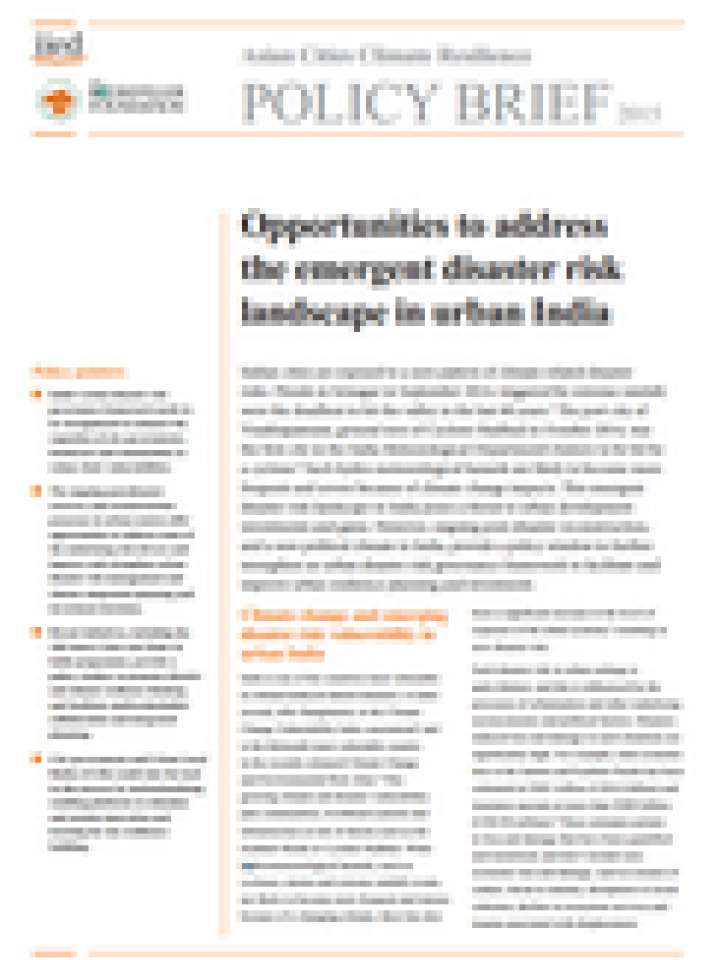Opportunities to address the emergent disaster risk landscape in urban India
This brief addresses the emergent disaster risk landscape in India as a major threat to urban development investments and gains. Nowadays Indian cities are exposed to a new pattern of climate-related disaster risks. Floods in Srinagar in September 2014, triggered by extreme rainfall, were the deadliest to hit the valley in the last 60 years. The port city of Visakhapatnam, ground zero of Cyclone Hudhud in October 2014, was the first city in the India Meteorological Department’s history to be hit by a cyclone.
The brief presents a summary of the emerging disaster risk vulnerability in urban India and points out the opportunities for action arising from the ongoing post-disaster reconstruction and the new political climate in India, providing a policy window to further strengthen an urban disaster risk governance framework to facilitate and improve urban resilience planning and investment. It includes a table of key elements of urban risk governance and the opportunities at city level in India.
Explore further
